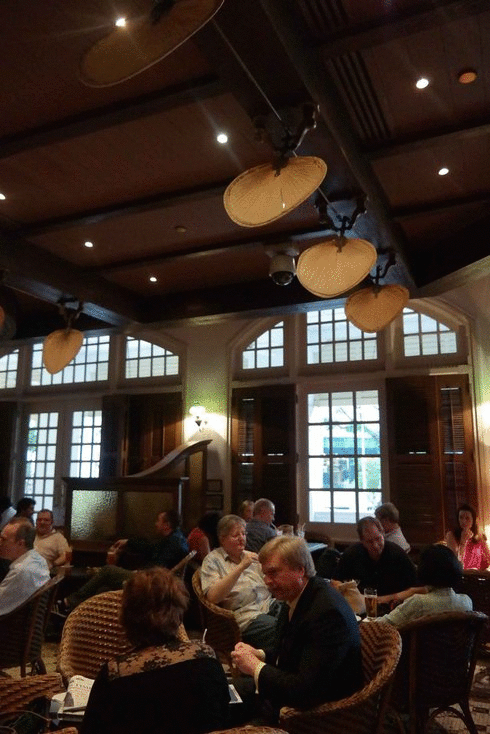Good question: why, having flown 14 hours
and many, many miles around the world, would anyone choose to spend their
precious time on a cooking course?
The answer seemed simple to me pretty soon
after arriving in Singapore. It’s
actually less of a question of why one would do that, and much, much more a
question of why wouldn’t you do so. You see,
Singapore is a food city. There’s so
much of it, and most of its good. It’s a
focal point for everyone – whether local or ex-pat. My guidebook made a quip along the lines of ‘people
in Singapore start talking about where to go for the next meal before they’ve
started eating the last one’. I assumed
that was hyperbole. It’s not.
So learning some of the local food cultures
and traditions seemed a good idea. I
therefore spent some time researching the best cooking classes you can do in
Singapore. And one name kept coming back
to me, over and over again: Cookery Magic.
Now, I’m going to go through all of the
reasons why I had a great day, and how much fun everything was. But I want to start by saying this: there is
one and only one very good reason why Cookery Magic comes so highly
recommended, and it is this woman.
Ruqxana
Vasanwala.
I can think of all
sorts of people who can, and probably would, make a fantastic cooking
tutor. And all sorts of the right sorts
of qualities that you’d need to do the job well. Ruqxana has them in spades – she is clear,
informative, friendly, fun, patient – all the necessary elements needed for a good
teacher, especially in the kitchen. She’s
been running the school for over a decade now, and it’s immediately obvious to
any visitor why she’s still going strong.
Our menu for the day
was ayam lemak (chicken cooked in spicy coconut milk, almost (but not quite!)
like a green curry), sambal terung (aubergines stuffed with sambal, a kind of
red chilli paste, and dried prawns) and bubor pulut hitam (black glutinous rice
pudding). I’m not going to completely
undercut Ruqxana by giving you the exact recipes, but I’ll
talk you through them.
First point to note, everything was
provided fresh as a daisy. There were
pandan leaves from Ruqxana’s garden, we toasted and ground our own spices, and
everything else had been sourced from Singapore’s infamous wet markets.
The first step was actually to get pudding going - the rice takes a while to cook.
And, once it's getting there, it's time to add all the goodness - including this incredible semi-fermented palm sugar Ruqxana had cultivated.
We started by making
the curry paste for the chicken.
Now, I’m sure you’ve
all done this at home – or know someone who has. You shove all the ingredients in the blender,
right?
Wrong. You grind them. You know how, when you make a Thai curry (for
instance) at home sometimes and it tastes nothing like a Thai curry from your
favourite restaurant? And you know how
you followed the recipe exactly, and still can’t figure out the
difference? Well, I can now tell you:
It’s the paste. Your blending it, which
will fundamentally change the nature of the proteins, fats and sugars – the
result being that it will, as a matter of fact, taste different.
No, if you want to
create the authentic flavours, you have to get grinding. Which is HARD WORK. Seriously.
Even so, sooner or later we had pounded the
ingredients into a smooth(ish) paste, which then gets cooked off until it’s
nice and aromatic.
Then there's the addition of coconut milk...
…and then the chicken itself, which goes in in great big pieces, and is allowed to cook off.
Next up was the aubergines, the first stage of which is to create the sambal. Now, I won't lie - when I saw this collection of ingredients (basically, chillies, chillies and more chillies) I was a touch concerned. I can handle hot food, definitely, but this was a little… well, intimidating.
Much like the curry paste, the sambal is made by being ground into a fine paste. If I thought that grinding the curry paste was hard work, it was nothing compared to this. Seriously, nothing. Still, it was totally worth it.
And again, much like the curry paste, cooking the sambal off when it's fully ground releases all the flavours and aromas.
Next step was to slice the aubergine into big thick rounds, performing a half slice in-between each round, to provide for a little stuffing pocket. Filling this up with sambal, the rounds were ready for frying off. Ruqxana pointed out that these could be grilled instead, if one was being a little more health conscious.
Pretty soon, we were ready to serve up.
Ayam lemak.
Bupor pulut hitam, served with coconut cream and mango.
I cannot recommend Cookery Magic enough. Definitely worth a half day - especially if you're a foodie. Ruqxana is absolutely magic. Also, a big hat tip needs to be given to my co-pupils, who were a great bunch of people and a lot of fun to spend a morning with.
- GrubsterBoy -
- GrubsterBoy -

































































